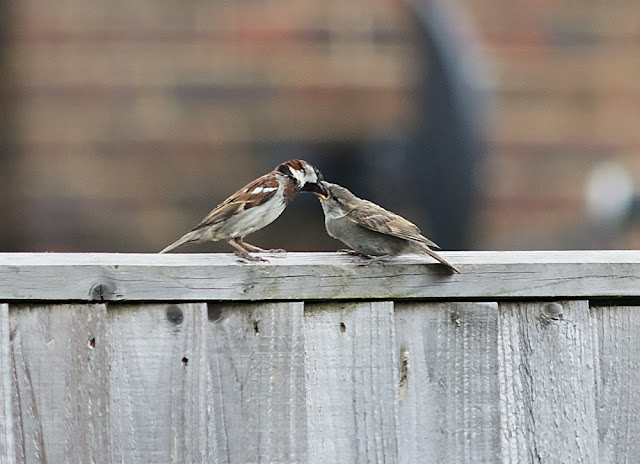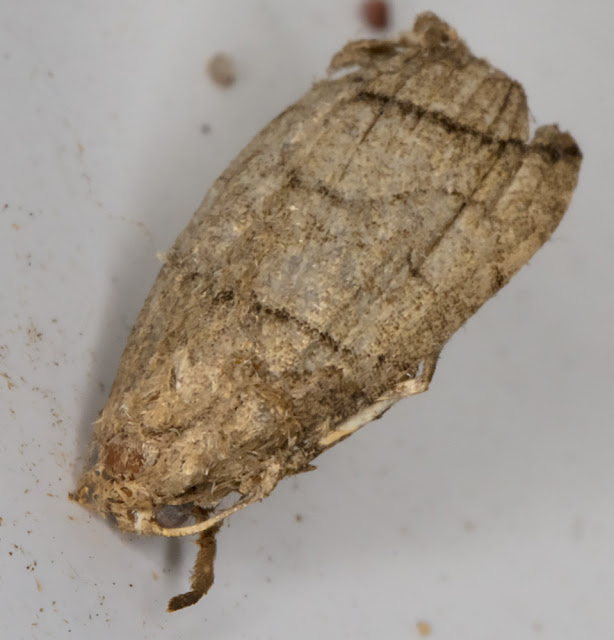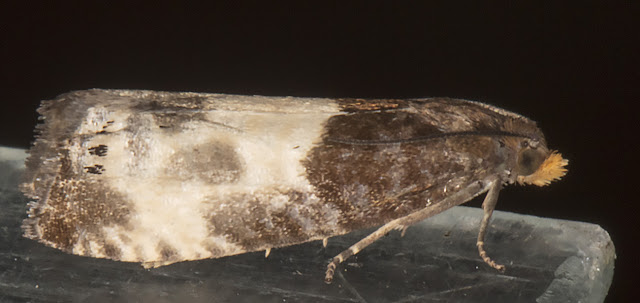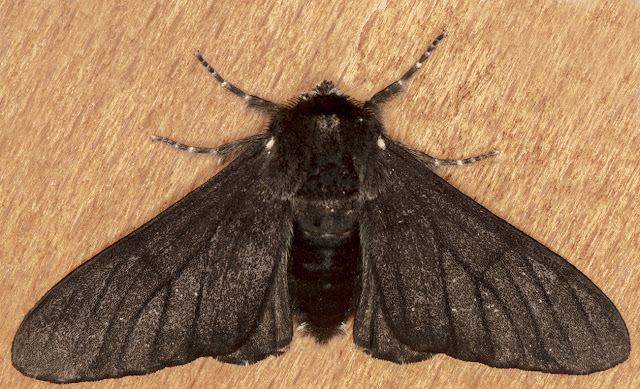 |
| Jackdaw, Corvus monedula, in my garden in Crowborough. 15 June 2017. |
So, I have been lounging on my sofa with a longish lens in my camera (200mm with a 1.4x extender) taking shots of birds through my window. There are several familiar species. A few are missing, so far at least. This one, the Western Jackdaw, never appeared in my old garden so it was a surprise to see two of them eyeing up my lawn.
 |
| House Sparrows, Passer domesticus, in my back garden in Crowborough. 15 June 2017. |
House Sparrows used to be very common but are now less so, and are another species I didn't see in my Hayes garden, so I am pleased that a little flock of them like my sunflower heart feeder. The one in flight is a male.
 |
| House Sparrows, Passer domesticus, in my back garden in Crowborough. Male feeding young. 15 June 2017. |
He was taking the sunflower seed hearts to feed this young one on my back fence.
Young Bluetits seem more capable of finding their own food.
 |
| Young Bluetit, Cyanistes caeruleus, in my back garden in Crowborough. 15 June 2017. |
Tits like peanuts, which they take to a safe spot to eat bit by bit. I saw a Great Tit earlier, but didn't get a photo. No Coal Tits as yet, though.
Another of the crow family has also appeared.
 |
| Magpie, Pica pica, over my back fence in Crowborough. 15 June 2017. |
A Magpie. And there are two of the dove family:
 |
| Collared Dove, Streptopelia decaocto, on my back fence in Crowborough. 15 June 2017. |
A Collared Dove, and several Wood Pigeons:
 |
| Wood Pigeon, Columba palumbus, on my back lawn in Crowborough. 15 June 2017. |
Several birds like to investigate the lawn when it has just been mown. The Wood Pigeons stroll around as though they own the place. Most of the birds are more cautious.
I have seen (but not photographed) a pair of blackbirds, and there are sometimes a few starlings:
 |
| Common starling, Sturnus vulgaris, on my back lawn in Crowborough. 15 June 2017. |
Starlings usually work over the lawn in groups, looking for grubs such as leatherjackets - which are cranefly grubs that eat grass roots, so the starlings are a good thing. I suspect I won't have much slug or snail trouble, either, given the high general level of bird activity here.
It's not just birds that like the garden:
 |
| Cat on my back fence in Crowborough. 15 June 2017. |
But I think this visitor likes the birds rather than the lawn.
















